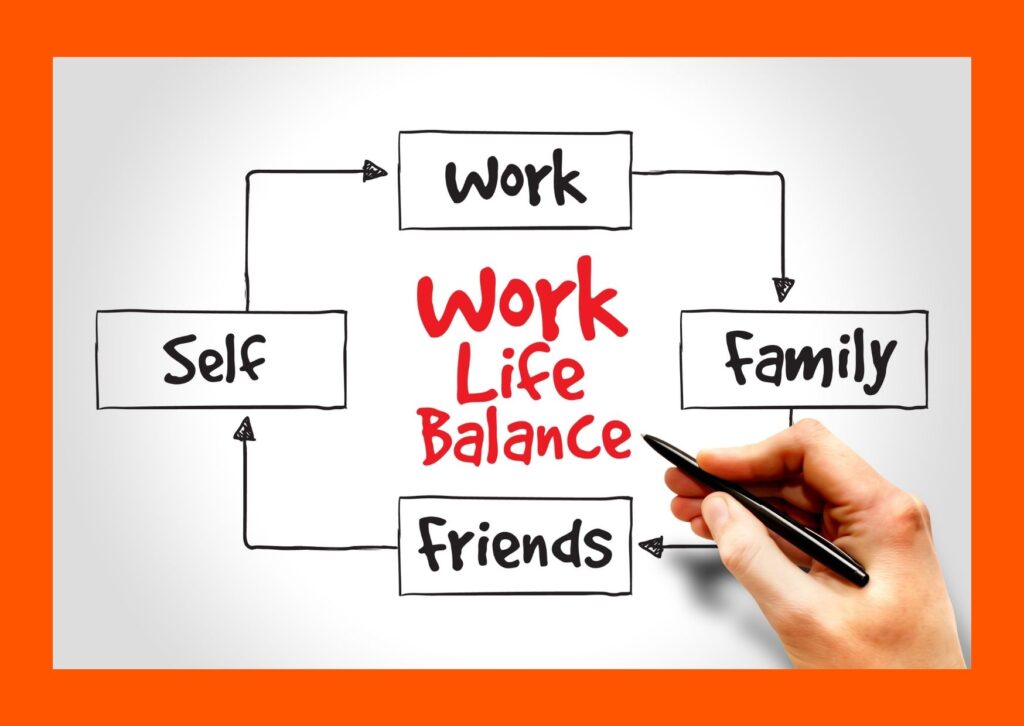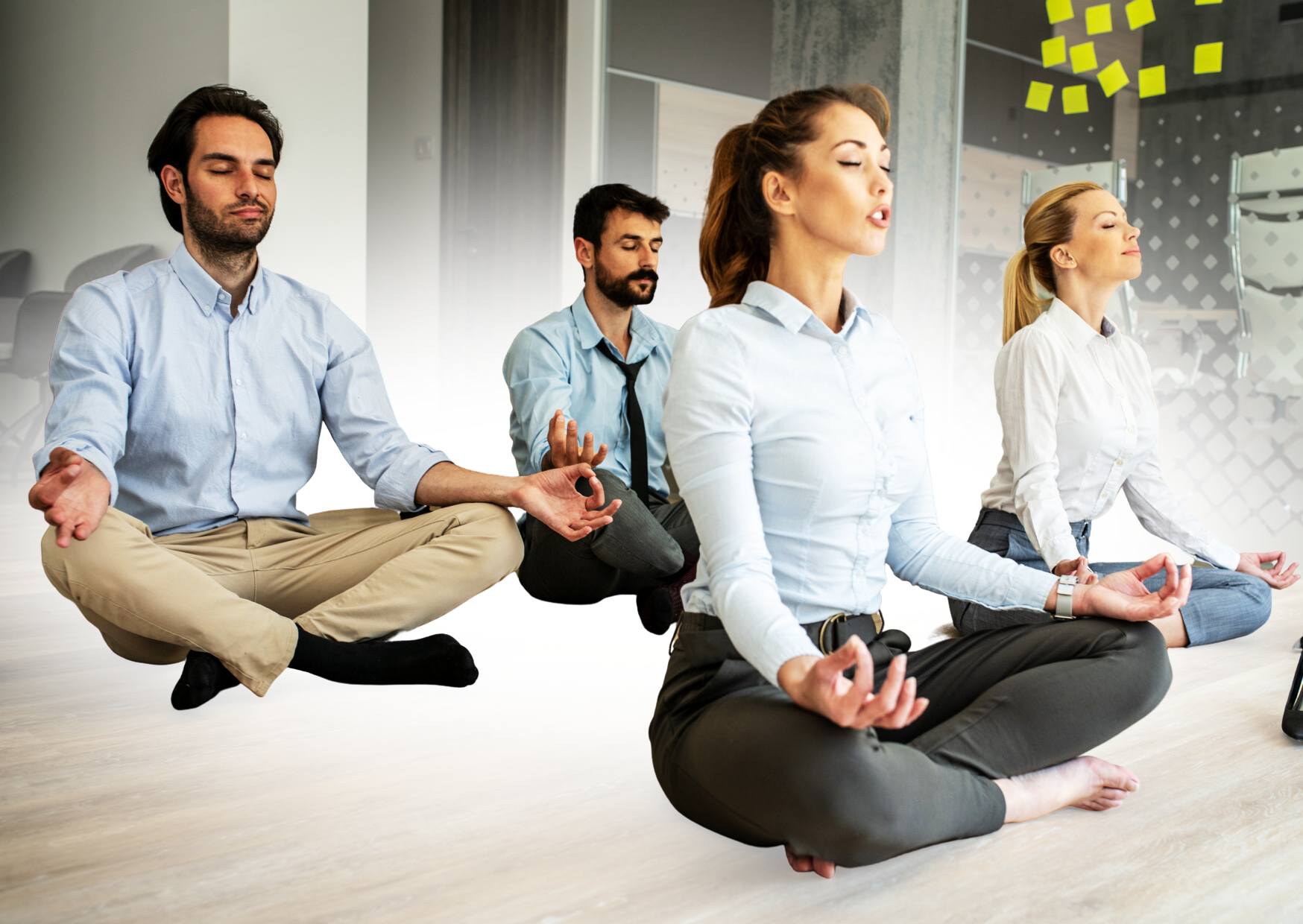10 Loveable Self-care Activities for Staff Meetings
Self-care activities have become an important activity in the demanding landscape of the modern workplace.
In an era where productivity often takes centre stage, the significance of personal wellbeing can sometimes be overlooked.
As we navigate the intricacies of our professional lives, the integration of self-care moments, especially during staff meetings, emerges as a crucial element.
This article sheds light on the need for self-care practices during meetings, their benefits, and offers ten loveable activities to infuse into your next team meeting.
Contents
The Need for Self-care Activities in Meetings
The Benefits of Self-care Activities in Meetings
10 Loveable Self-care Activities for Staff Meetings
Tips for Implementing Self-care Activities in Meetings
The Need for Self-care Activities in Meetings
Meetings, often seen as the place where decisions are made and staff collaborate, can also be sources of stress and mental fatigue.
The back-to-back schedules, the pressure to contribute, and the sheer volume of information exchanged can leave participants feeling drained.
This is where the role of self-care becomes pivotal.
Incorporating self-care activities in meetings is a way to ensure attendees are at their best.
With the rise of remote work and virtual meetings, the lines between personal and professional lives have blurred.
Employees often find themselves juggling multiple roles, leading to burnout and decreased productivity.
The absence of physical cues, like a colleague’s reassuring smile or a pat on the back, can make virtual meetings feel impersonal and taxing.
Furthermore, the cognitive load during meetings is substantial.
Discussions, brainstorming sessions, and presentations demand intense concentration, leading to mental exhaustion.
Without breaks or moments of relaxation, this continuous engagement can impact an individual’s wellbeing and creativity.
Self-care activities serve as a buffer, providing attendees with a chance to recharge, refocus, and reconnect.
They foster a culture of empathy, reminding everyone that while work is essential, so is mental and emotional health.
By prioritising self-care, meetings can transform from mere task-oriented gatherings to holistic employee wellbeing experiences that cater to both the mind and the soul.

The Benefits of Self-care Activities in Meetings
Integrating self-care activities into meetings is more than just a thoughtful gesture.
They bring a range of benefits that can enhance the overall meeting experience and outcomes.
Let’s look into some of these advantages:
Enhanced Focus and Productivity
A short self-care break can act as a mental reset, allowing participants to return to the discussion with renewed energy and clarity.
This can lead to more productive discussions and better decision-making.
Reduced Stress and Burnout
Regular intervals of relaxation and mindfulness can alleviate the stress that accumulates during intense discussions.
Over time, this can play a significant role in preventing burnout among team members.
Improved Team Cohesion
Self-care activities often involve collective participation.
Whether it’s a group breathing exercise or a shared moment of gratitude, these activities can foster a sense of unity and camaraderie among attendees.

Increased Creativity
A relaxed mind is a creative mind.
By allowing moments of pause and reflection, self-care activities can pave the way for innovative ideas and solutions to emerge.
Promotion of Mental Wellbeing
Prioritising self-care sends a strong message about the importance of mental health.
It demonstrates an organisation’s commitment to the wellbeing of its employees, fostering a supportive work environment.
Higher Meeting Engagement
When attendees feel refreshed and valued, they are more likely to engage actively in discussions.
Self-care activities can thus enhance participation and contribution levels.
Better Work-Life Balance
By incorporating self-care into the professional realm, employees are reminded of the importance of balance.
It encourages them to prioritise self-care outside of meetings as well, leading to a healthier work-life equilibrium.
In conclusion, the benefits of self-care activities in meetings extend beyond the immediate relaxation they provide.
They contribute to a holistic work culture where wellbeing is celebrated, leading to happier, more productive, and more connected teams.

10 Loveable Self-care Activities for Staff Meetings
These activities will provide ideas of how to incorporate self care into meetings to get the most out of attendees.
1. Mindfulness Meditation
Mindfulness meditation is a practice that centres on being present in the moment, acknowledging thoughts and feelings without judgment.
Introducing a short 5-minute mindfulness session at the beginning of a meeting can set a positive tone for the entire gathering.
It allows participants to let go of external distractions and focus on the task at hand.
To implement this, you can use guided meditation apps or simply encourage attendees to close their eyes, take deep breaths, and concentrate on their breathing.
Over time, this practice can enhance concentration, reduce anxiety, and promote a sense of calmness, making meetings more productive and less stressful.

2. Gratitude Sharing
Starting a meeting with a round of gratitude sharing can uplift the mood and foster a positive environment.
Each participant can take a minute to share something they’re grateful for, whether it’s work-related or personal.
This simple act can shift the focus from challenges and stressors to positive aspects, promoting a sense of appreciation and contentment.
Gratitude sharing not only strengthens team bonds but also offers perspective, reminding everyone of the bigger picture and the many blessings in their lives.
To really get employees feeling grateful, check out our “Harnessing Gratitude Employee Wellbeing Workshop”

3. Stretching and Movement Breaks
Sitting for extended periods can lead to physical stiffness and decreased circulation.
Incorporating short stretching or movement breaks during meetings can help to counteract these effects.
Every 30 minutes or so, encourage attendees to stand up, stretch their arms, twist their torsos, and even take a short walk around their workspace.
These breaks not only alleviate physical tension but also provide a mental breather, allowing participants to return with a refreshed mindset.

4. Breathing Exercises
Breathing exercises are powerful tools to instantly calm the mind and reduce stress.
Introducing a 3-minute deep breathing session can make a significant difference, especially during intense discussions.
Guide the team through a simple exercise: inhale deeply for a count of four, hold for four, and exhale for four.
Repeating this several times can lower heart rates, reduce anxiety, and improve focus.
It’s a quick and effective way to calm the group, ensuring everyone is mentally present and engaged.

5. Positive Affirmation Sharing
Incorporating positive affirmations into meetings is a powerful way to elevate the mindset of attendees.
These self-care activities involve vocalising uplifting statements that counteract negative thoughts and foster a growth-oriented perspective.
For instance, team members might share affirmations like, “I embrace challenges as opportunities for growth,” or “Every effort I make contributes to my success.”
By regularly integrating these affirmations into staff meetings, teams can cultivate a positive work environment.
The act of verbalising these statements not only boosts individual morale but also reinforces a culture where self-care and mental wellbeing are prioritised.
From experience, not everyone is comfortable with this, so check with attendees before pursuing this option.

6. Guided Imagery
Guided imagery offers a unique self-care activity that transports participants to a place of calm and relaxation, even if just for a few minutes.
During meetings, a brief guided imagery session can serve as a mental break.
A facilitator can lead the team through a visualisation of a serene setting, such as a quiet mountain retreat or a sunlit meadow.
As participants immerse themselves in this imagined environment, they’re encouraged to focus on sensory details.
Whether it’s the chirping of birds, the gentle breeze, or the scent of fresh flowers.
This self-care activity not only provides a break from the meeting’s agenda but also rejuvenates the mind.
This helps to ensure participants return to the discussion with a refreshed and focused mindset.
7. Desk Yoga
Desk yoga is a fantastic self-care activity that addresses both the physical and mental strains of prolonged sitting during meetings.
Without needing much space, participants can engage in simple yoga poses and stretches right at their desks.
For instance, the seated spinal twist or gentle neck stretches can alleviate tension and improve flexibility.
By incorporating a 10-minute desk yoga session into meetings, attendees can experience immediate relief from stiffness and enjoy a boost in energy levels.
Over time, this practice not only promotes physical wellbeing but also emphasizes the importance of taking short breaks for self-care during work.

8. Mental Health Check-ins: Prioritising Wellbeing in Meetings
One of the most impactful self-care activities is the mental health check-in.
At the start or end of a meeting, create a safe space for team members to share how they’re feeling, both professionally and personally.
This isn’t about diving deep into personal issues but rather acknowledging emotions and ensuring everyone feels seen and heard.
It’s a proactive approach to mental wellbeing, allowing teams to support one another and address potential concerns before they escalate.
By making mental health check-ins a regular part of meetings, organisations underscore the message that while tasks and targets are essential, the wellbeing of employees is paramount.

9. Music and Dance Break: A Joyful Self-care Interlude
Incorporating a short music and dance break can be a delightful self-care activity during meetings.
It’s a chance for attendees to shake off any lethargy and re-energise.
Simply play an uplifting tune and encourage everyone to stand up and move, even if it’s just swaying to the rhythm.
This break doesn’t have to be long, just a few minutes can make a difference.
The combination of music and movement releases endorphins, the body’s natural feel-good chemicals.
As a result, participants often return to the meeting agenda with increased enthusiasm and a brighter mood.
This self-care activity not only breaks the monotony but also promotes a fun and inclusive work culture.
Some colleagues will love this, others will feel shy.
Ensure to respect everyone’s response to this.

10. Nature Connection: A Self-care Activity for the Soul
Even if your meeting room doesn’t have a picturesque view, you can still harness the calming effects of nature as a self-care activity.
Consider having a segment where attendees share a recent nature experience, whether it’s a beautiful sunrise they witnessed, or a walk in the park.
Alternatively, play a short video or slideshow of serene natural landscapes, accompanied by ambient sounds like chirping birds or flowing water.
Connecting with nature, even virtually, can reduce stress, improve mood, and enhance cognitive function.
If at all possible, why not take the meeting into nature?
Whether it’s a local park or a visit to the local river.
By integrating this self-care activity into meetings, you offer attendees a brief escape, allowing them to return to tasks with a clearer and more focused mind.

Tips for Implementing Self-care Activities in Meetings
Successfully integrating self-care activities into staff meetings requires more than just a list of activities.
It’s about creating an environment where wellbeing is valued and prioritised.
Here are some practical tips to ensure that these self-care activities are effective and resonate with all attendees:
Start Small and Gradual
If self-care activities are new to your team, begin with shorter, simpler exercises.
This allows attendees to acclimate to the idea without feeling overwhelmed.
Ensure Participation is Optional
While the goal is to promote wellbeing, it’s essential to recognise that everyone’s comfort levels vary.
Make sure participants know that joining in is optional and that it’s okay to sit out if they prefer.
Rotate Activities
To keep things fresh and cater to diverse preferences, consider rotating different self-care activities in meetings.
This ensures that over time, there’s something for everyone.
Seek Feedback
After introducing a new self-care activity, solicit feedback from the team.
Understanding what resonates and what doesn’t can help tailor future sessions more effectively.

Set the Tone
As a facilitator or leader, your attitude towards these activities can influence the team’s reception.
Approach them with genuine enthusiasm and openness, setting a positive tone for others to follow.
Allocate Specific Time
Ensure that self-care activities don’t feel rushed.
Dedicate a specific time slot in the agenda, ensuring participants can engage without constantly watching the clock.
Use Technology
For virtual meetings, utilise apps or platforms that offer guided sessions, be it meditation, imagery, or stretching exercises.
This can provide a structured approach to self-care, especially when teams are remote.

Educate and Advocate
Occasionally share the benefits and importance of these self-care activities.
Understanding the ‘why’ behind them can increase buy-in and participation.
Create a Safe Environment
Ensure that the meeting space, whether physical or virtual, feels safe and non-judgmental.
This encourages participants to engage authentically without fear of judgment.
Stay Consistent
While it’s okay to rotate activities, strive for consistency in incorporating self-care into meetings.
Over time, this consistency reinforces the message of its importance and becomes a cherished part of the meeting routine.
By following these tips and maintaining a genuine commitment to team wellbeing, self-care activities can transform staff meetings from mere task-driven events to holistic experiences that nurture both the mind and spirit.

The integration of self-care activities into staff meetings stands out as a testament to the importance of employee wellbeing.
As we’ve explored, these activities are more than just moments of relaxation.
They’re a powerful statement that underscores the value of each team member’s mental and emotional health.
Embracing and prioritising these practices means organisations can foster a culture where productivity and wellbeing walk hand in hand.
Author
Tyler Lowe – Health & Wellbeing Speaker
BSc Sport & Exercise Rehabilitation


